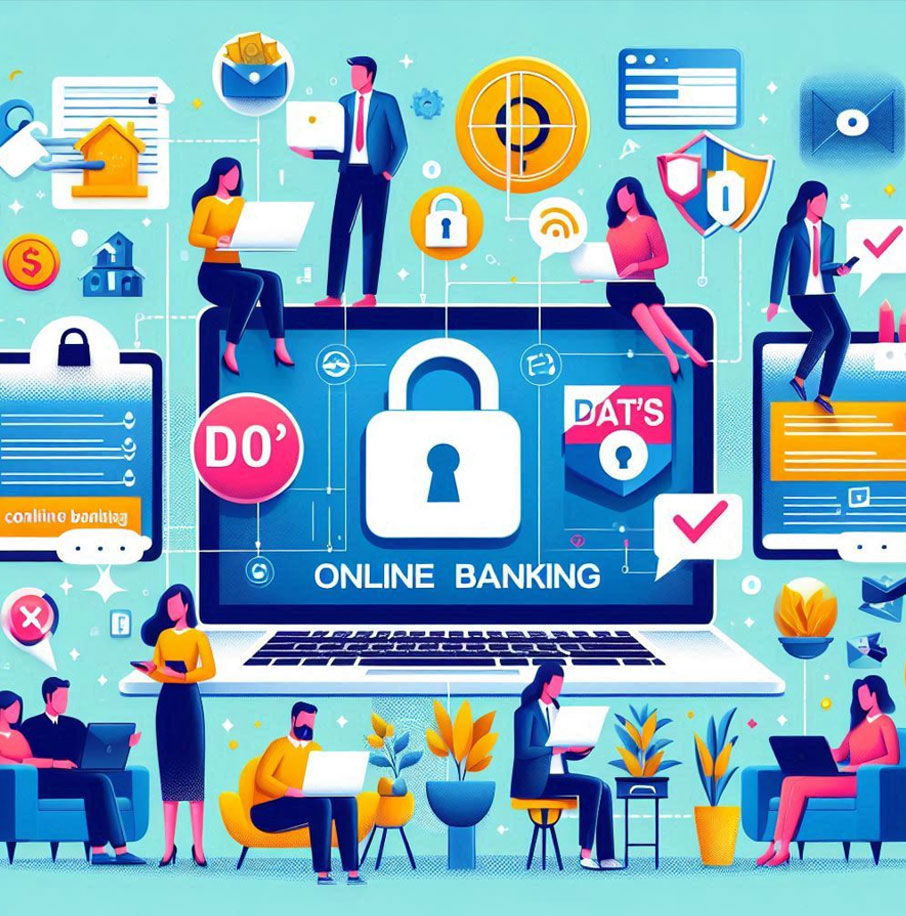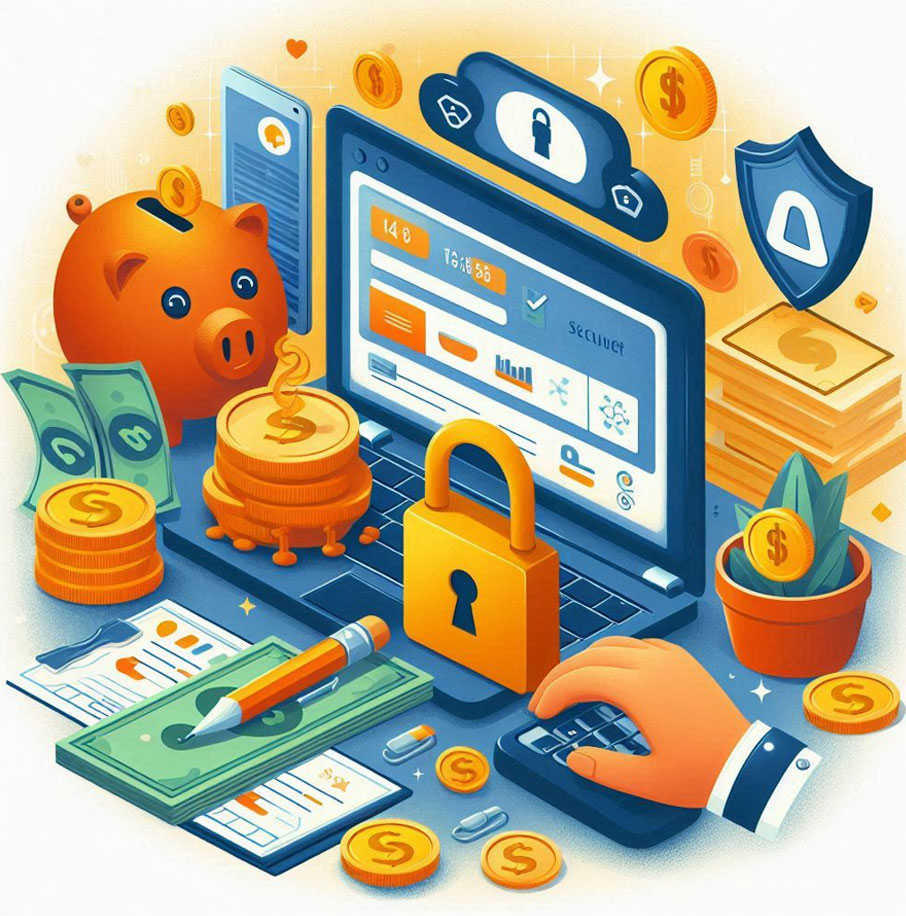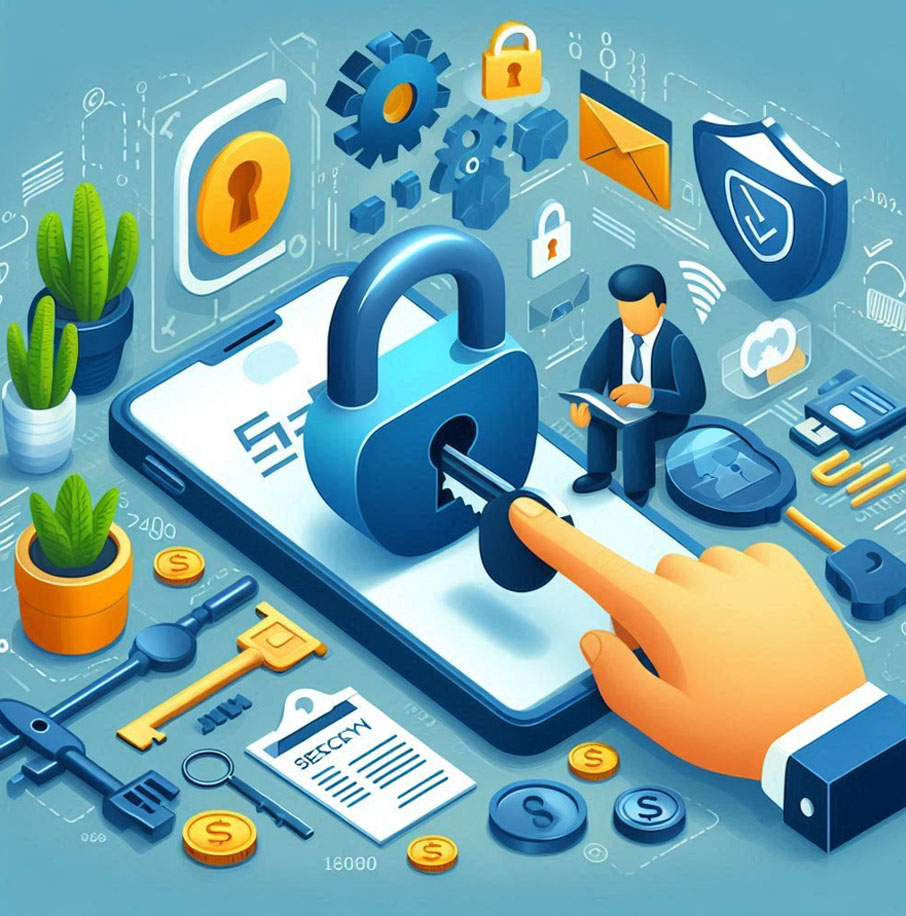Cybersecurity for Online Banking: The Do’s & Don’ts
Online Banking Made Safe: Follow These Cybersecurity Best Practices!

Cybersecurity for Online Banking
In today’s digital era, Cybersecurity For Online Banking has become an essential part of our daily lives. While it offers convenience, it also exposes users to various cybersecurity threats, including phishing, identity theft, and fraud. Understanding the best practices for securing your online banking activities can protect you from financial loss and data breaches. In this guide, we will explore the do’s and don’ts of online banking security to help you safeguard your finances.
The Importance of Cybersecurity in Online Banking
With cyber threats on the rise, online banking security has never been more critical. Hackers use sophisticated techniques to steal login credentials and personal information, leading to unauthorized transactions and financial loss. Following cybersecurity best practices ensures your sensitive data remains safe from malicious actors.
The Do’s of Cybersecurity For Online Banking
 1. Use Strong and Unique Passwords
1. Use Strong and Unique Passwords
A strong password is your first line of defense against hackers. Follow these guidelines:
- Create passwords that are at least 12-16 characters long.
- Use a mix of uppercase and lowercase letters, numbers, and special characters.
- Avoid using common words, birthdates, or easily guessable information.
- Use password managers to securely store and generate complex passwords.
2. Enable Two-Factor Authentication (2FA) Cybersecurity for Online Banking
Two-factor authentication (2FA) adds an extra layer of security by requiring an additional verification step of Cybersecurity For Online Banking. This could be:
- A one-time password (OTP) sent to your mobile device.
- Authentication through an app like Google Authenticator or Microsoft Authenticator.
- Biometric verification, such as fingerprint or facial recognition.
3. Keep Your Banking App and Software Updated
Cybercriminals exploit vulnerabilities in outdated software. To stay protected Cybersecurity for Online Banking:
- Regularly update your banking apps and operating system.
- Enable automatic updates for security patches.
- Use only official banking apps downloaded from trusted sources like Google Play Store or Apple App Store.
4. Monitor Your Bank Statements and Alerts
Regularly checking your bank transactions can help detect fraudulent activity early:
- Set up real-time alerts for transactions.
- Review monthly bank statements.
- Immediately report any suspicious transactions to your bank.
5. Use Secure Internet Connections
When accessing online banking:
- Use a secure Wi-Fi connection (avoid public Wi-Fi networks).
- If necessary, use a VPN (Virtual Private Network) for an extra layer of security.
- Ensure the website URL starts with “https://”, indicating a secure connection.
6. Log Out After Every Banking Session
Always log out of your online banking session, especially when using a shared or public device. This prevents unauthorized access if your session remains active.
The Don’ts of Online Banking Security
 1. Don’t Share Your Banking Credentials
1. Don’t Share Your Banking Credentials
Your bank will never ask for your password, PIN, or OTP via email, phone, or text message. Beware of:
- Phishing emails pretending to be from your bank.
- Fake customer support calls asking for login details.
- Suspicious links that redirect to fake banking websites.
2. Don’t Click on Suspicious Links or Attachments
Cybercriminals often use malicious links or attachments to steal sensitive data. Avoid:
- Clicking on links in unsolicited emails or text messages.
- Downloading attachments from unknown sources.
- Visiting unverified third-party websites claiming to offer banking services.
3. Don’t Use Public Wi-Fi for Banking Transactions
Public Wi-Fi networks are unsecured and expose you to cyber threats. If you must access online banking:
- Use a VPN to encrypt your data.
- Disable automatic Wi-Fi connections on your device.
- Use your mobile network instead of public Wi-Fi.
4. Don’t Save Banking Passwords on Browsers
While it may be convenient, saving your banking credentials in your browser increases the risk of cyberattacks. Instead:
- Use a reliable password manager.
- Regularly clear saved passwords and browsing history.
- Enable browser security settings to prevent unauthorized access.
5. Don’t Ignore Security Notifications
If your bank alerts you about suspicious login attempts or account activity, take immediate action:
- Change your password immediately.
- Contact your bank to verify the alert.
- Enable account recovery options for added protection.
Conclusion
Online banking security is crucial to protecting your financial assets from cyber threats. By following the do’s and don’ts outlined above, you can minimize risks and ensure safe transactions. Always be vigilant, use strong security measures, and stay informed about the latest cybersecurity threats.
For additional security tips, subscribe to our blog and stay updated on the latest in cybersecurity for online banking.




